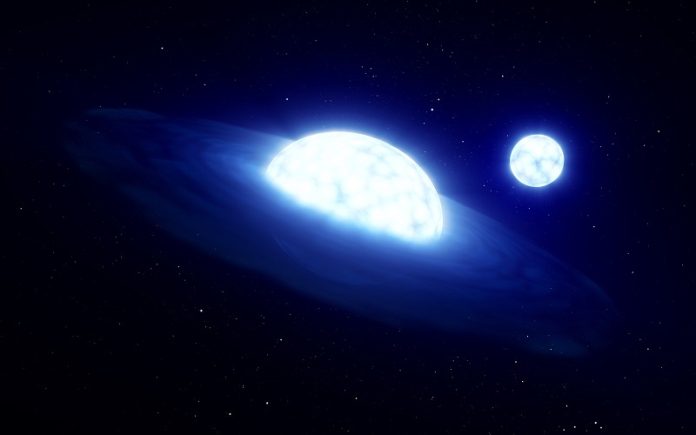
In a groundbreaking study, scientists at the University of Leeds have made a discovery that could change the way we understand some of the most significant and prevalent stars in the universe.
Their research, recently published in the journal Monthly Notices of the Royal Astronomical Society, presents intriguing evidence that massive Be stars, previously thought to mainly exist in pairs, may actually be part of triple star systems.
Be stars are a subset of B stars, surrounded by distinct gas disks, much like Saturn’s rings in our solar system.
First identified by Italian astronomer Angelo Secchi in 1866, the formation of these disks has been a mystery.
The prevailing belief was that the disks result from Be stars rotating rapidly, possibly due to interactions with another star in a binary system.
However, Jonathan Dodd, a Ph.D. student, and Professor René Oudmaijer, from the University of Leeds, propose a different scenario.
Their research, based on data from the European Space Agency’s Gaia satellite, suggests these stars are part of triple star systems. This means instead of two, there are three celestial bodies interacting in these systems.
Dodd, the lead author of the study, explains their approach. They observed the movement of stars across the sky over long periods, like 10 years, and shorter spans, around six months. A straight-line movement indicates a single star, but any wobble or spiral suggests the presence of more than one star.
Initially, their observations indicated that Be stars had fewer companions than B stars, contrary to expectations. However, further analysis of data, focusing on companion stars at greater distances, revealed similar rates of companions for both B and Be stars.
The team theorizes that in many cases, a third star forces the companion closer to the Be star.
This proximity allows for mass transfer from the companion to the Be star, forming the characteristic disk. The companion stars, having lost significant mass to the “vampire” Be star, become too faint to be detected.
This discovery has far-reaching implications. It sheds light on the evolution of stars that eventually become black holes or neutron stars, key elements in understanding gravitational waves—a recent and revolutionary area in physics.
Professor Oudmaijer highlights the importance of binarity in stellar evolution, now suggesting that the complexity extends to triple star systems. He aptly puts it, “triples have become the new binaries.”
Key Takeaways
This research by the University of Leeds team is not just a significant step in understanding Be stars but also paves the way for new insights into the lifecycle of stars, black holes, neutron stars, and gravitational waves.
It’s a testament to the evolving nature of astronomical research, where new discoveries continue to challenge and refine our understanding of the cosmos.



